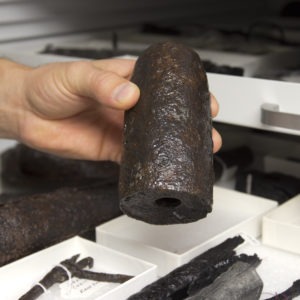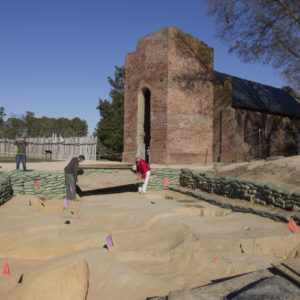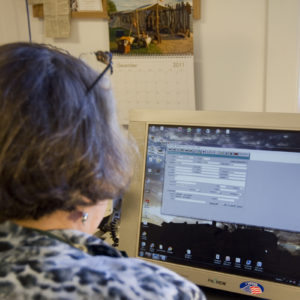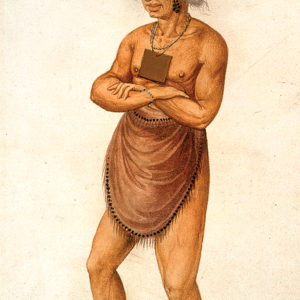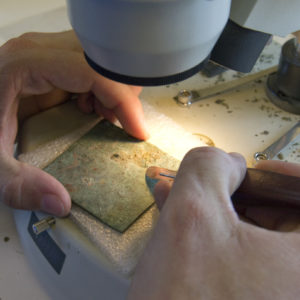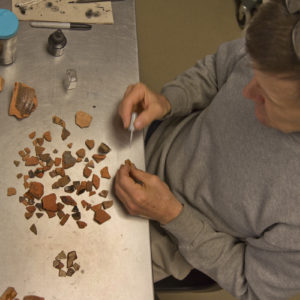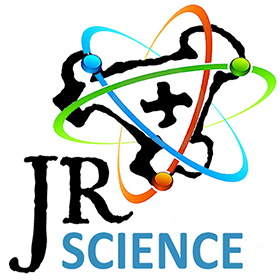 In the air abrasion room, conservator Dan Gamble was cleaning a goffering iron—a hollow cylindrical iron tool that was heated and used with starch to iron the stylish neck ruffs worn by men and women in the early 17th century. The air abrasion machine allows Dan to remove the rust or iron oxide buildup on the exterior of the artifact with a focused stream of fine aluminum oxide powder. The presence of this and other goffering irons at the James Fort site demonstrates that appearance was an important indication of status in the Jamestown society, just as it had been in England.
In the air abrasion room, conservator Dan Gamble was cleaning a goffering iron—a hollow cylindrical iron tool that was heated and used with starch to iron the stylish neck ruffs worn by men and women in the early 17th century. The air abrasion machine allows Dan to remove the rust or iron oxide buildup on the exterior of the artifact with a focused stream of fine aluminum oxide powder. The presence of this and other goffering irons at the James Fort site demonstrates that appearance was an important indication of status in the Jamestown society, just as it had been in England.
Nearby, curatorial assistant Merry Outlaw catalogued artifacts found this year in the postholes of a mid-17th-century building located towards the northern end of James Fort. Using the ReDiscovery electronic database, Merry may catalogue several hundred artifacts in an average day’s work. Nearly two million artifacts found by Jamestown Rediscovery archaeologists since 1994 have been catalogued in this manner.
Senior Conservator Michael Lavin used a microscope and scalpel to remove a concretion adhering to a square piece of flat copper found earlier this year in a posthole associated with a James Fort period (ca. 1607-1624) building. This object may have been one of the “squares of copper” that John Smith recorded trading to the Indians for corn. See below for an image of a 16th-century Indian leader wearing a similar object.
At one of the artifact sorting tables, staff archaeologist Don Warmke labeled fragments of pipes and pottery with their context numbers. Numbering is important not only to keep track of where the objects were found but because the fragments may mend to pieces of the same broken vessel or pipe found in other contexts. Archaeologists term this process cross-mending, which provides relationships between different areas of the dig site.
Although the field crew has transitioned from the dig site to working indoors for the winter months, when there are extended periods of good weather, the 1608 church site will be opened for visitors.
related images
- A goffering iron after conservation
- Archaeologists uncovering the site on a winter day
- Conservator Dan Gamble air abrading the goffering iron
- Curatorial assistant Merry Outlaw catalogues artifacts
- English artist John White’s portrayal of a Native American man
- Senior conservator Michael Lavin uses a microscope and scalpel
- Staff archaeologist Don Warmke labels artifacts



